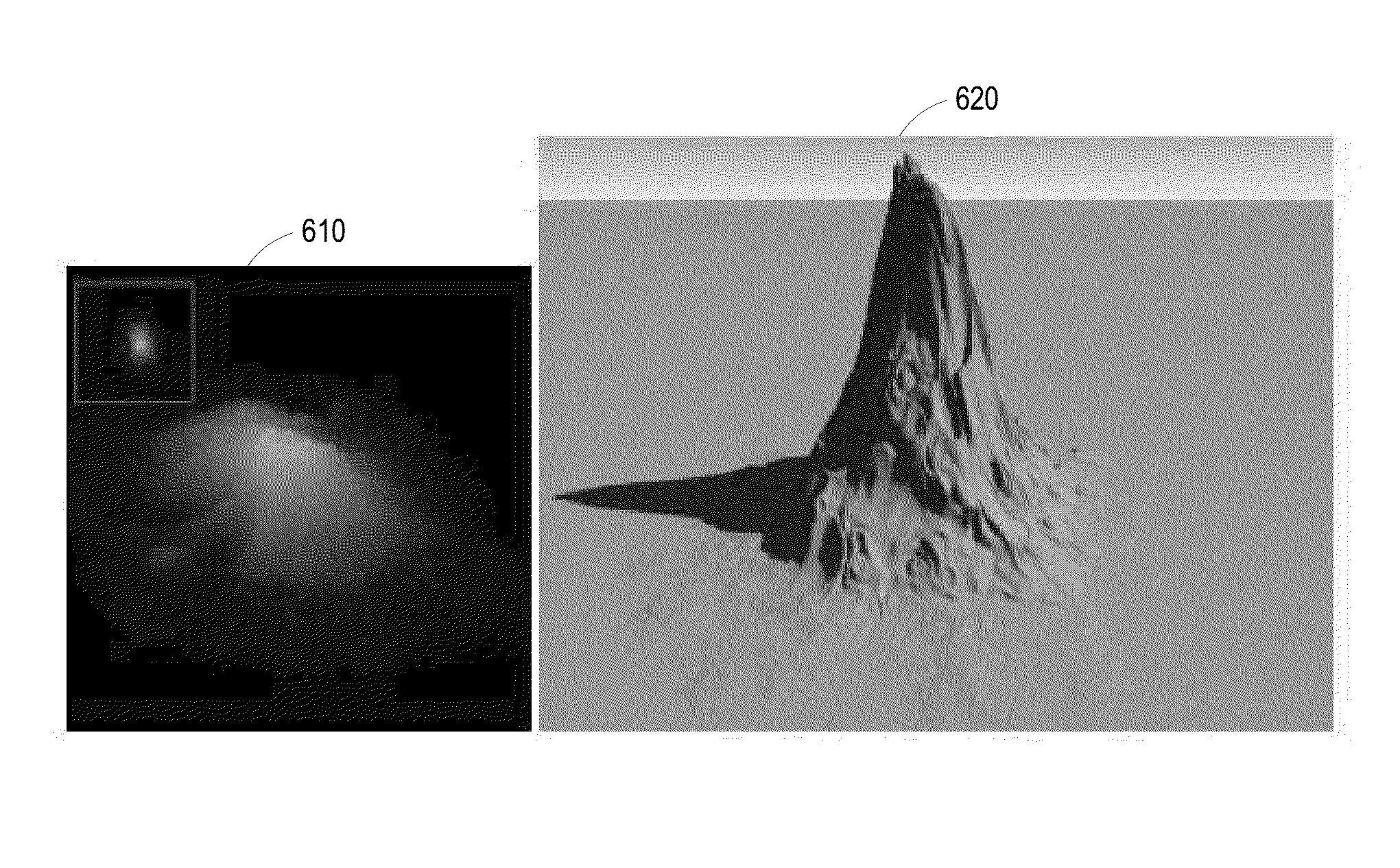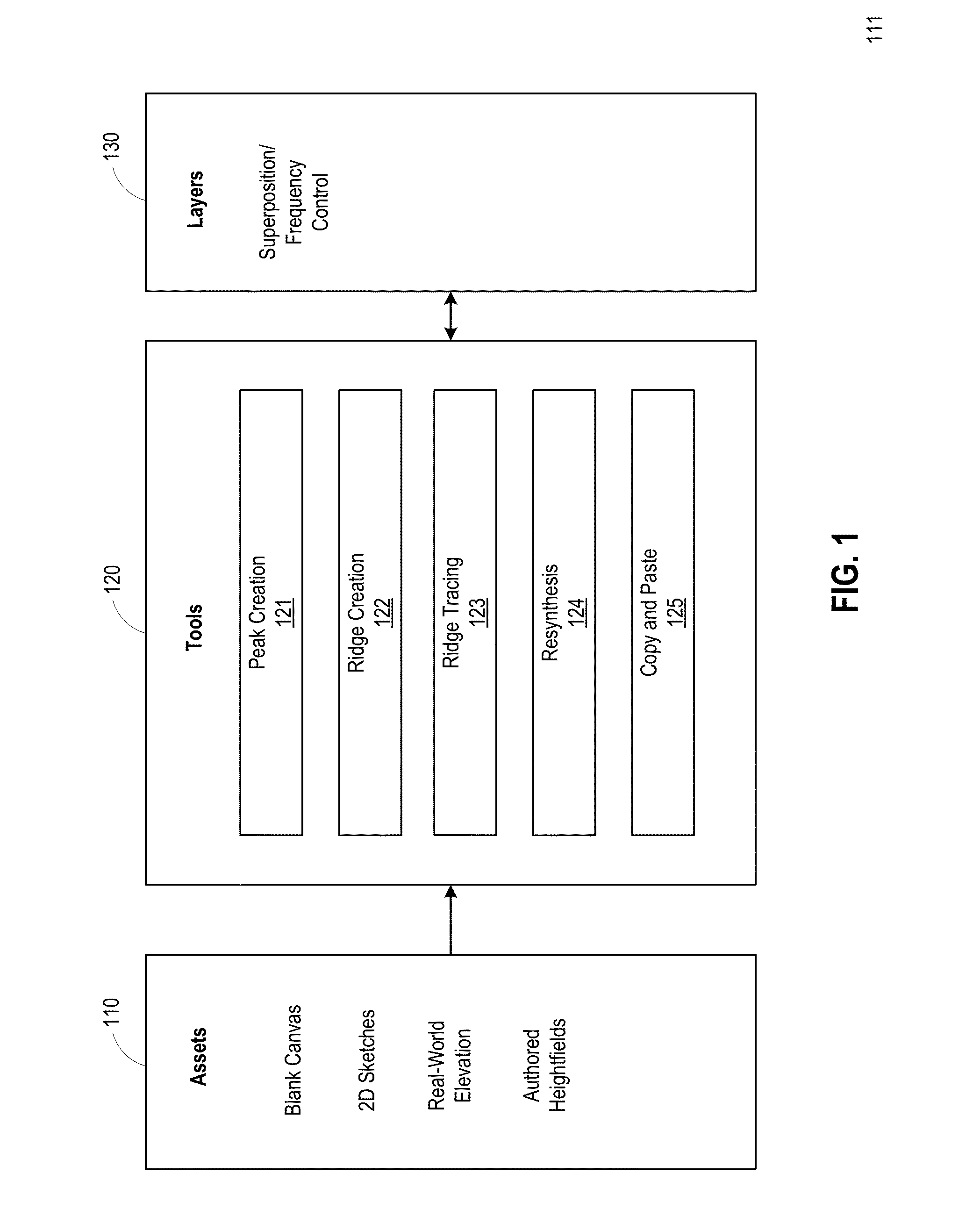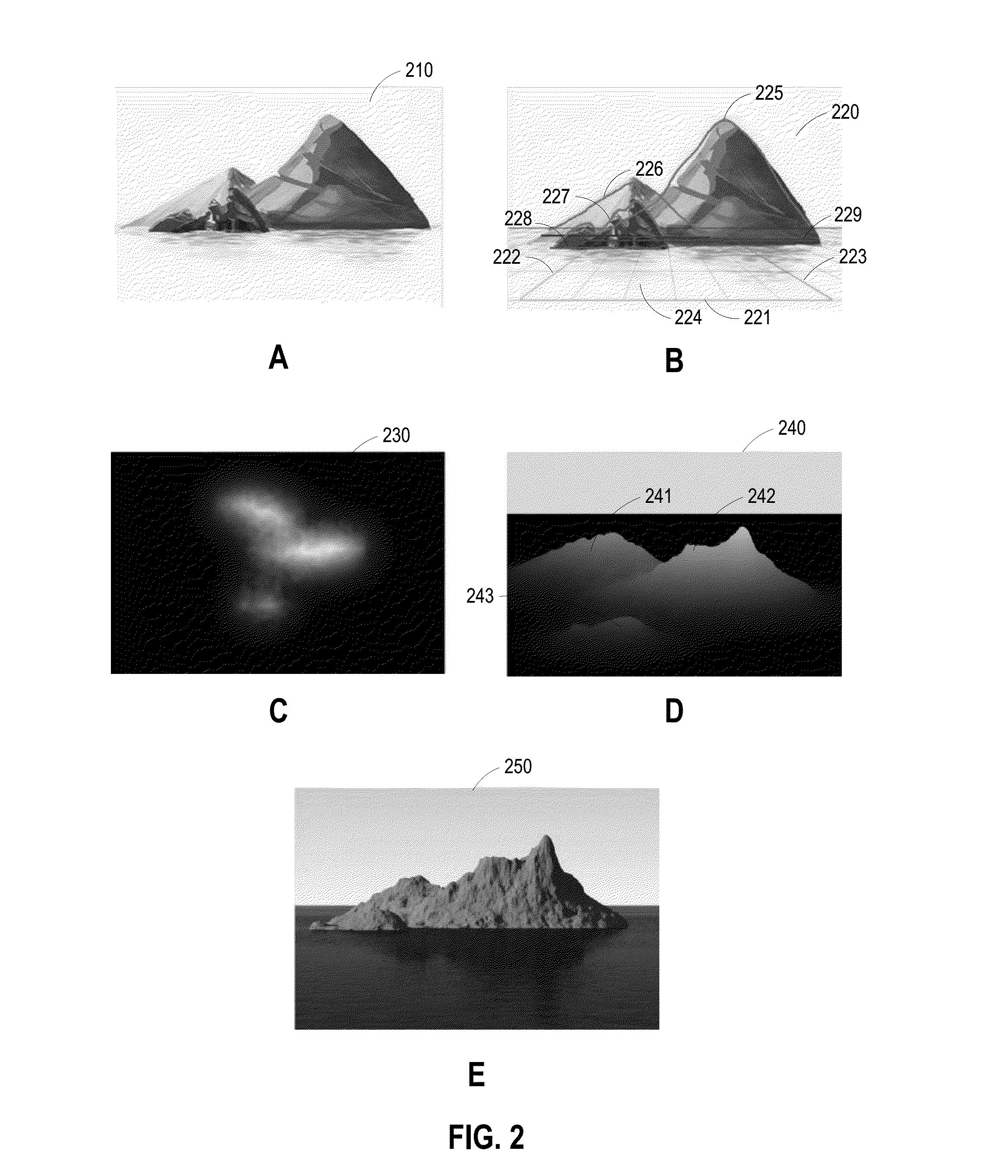Example based editing of virtual terrain maps
a virtual terrain and map technology, applied in the field of examples based editing of virtual terrain maps, can solve the problems of inherently stochastic landscapes, difficult for artists to manually model virtual terrains, and difficulty in extruding elevation meshes
- Summary
- Abstract
- Description
- Claims
- Application Information
AI Technical Summary
Benefits of technology
Problems solved by technology
Method used
Image
Examples
Embodiment Construction
[0018]Embodiments disclosed herein provide techniques for generating virtual terrains. A terrain editing application (“editing application”) is configured to receive asset(s) of various types that specify characteristics of a terrain. As used herein, “terrain” generally refers to any displacement field, including natural landscapes. That is, techniques disclosed herein are applicable to natural landscapes and may also be used for other forms of displacement map editing. The assets received by the terrain editing application may include a blank canvas, two-dimensional (2D) sketches, real-world elevation maps, authored heightfields, and the like. A received asset is added to a new layer and provides the starting point for the terrain-creation workflow. Each layer is configured to store terrain features, and the layers may be overlaid on top of each other in a specific order (e.g., a user-determined order). Experience has shown that artists tend to prefer a workflow that is guided and ...
PUM
 Login to View More
Login to View More Abstract
Description
Claims
Application Information
 Login to View More
Login to View More - R&D
- Intellectual Property
- Life Sciences
- Materials
- Tech Scout
- Unparalleled Data Quality
- Higher Quality Content
- 60% Fewer Hallucinations
Browse by: Latest US Patents, China's latest patents, Technical Efficacy Thesaurus, Application Domain, Technology Topic, Popular Technical Reports.
© 2025 PatSnap. All rights reserved.Legal|Privacy policy|Modern Slavery Act Transparency Statement|Sitemap|About US| Contact US: help@patsnap.com



